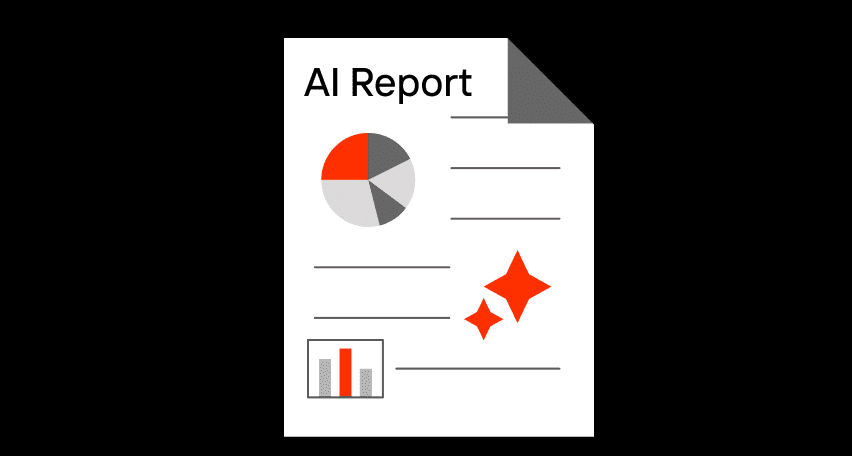Things You Need to Know Before Starting E-commerce Website Testing
In the age of the internet, there are many benefits to owning an e-commerce store. Apart from being a viable way of conducting business, the scope of e-commerce goes beyond the traditional barriers in retail and gives businesses the room to innovate. This is why all types of businesses – B2B and B2C – should create a website to establish an online presence for themselves.
The growth of e-commerce has been so rampant that the global e-commerce revenue is estimated to hit $6.54 trillion in 2022 from $3.53 trillion in 2019, according to Statista data.
With that said, business owners need to take adequate measures to ensure that their websites do not fall behind their competitors. As an e-commerce store owner, the performance of your website depends on a number of factors and is highly volatile. You need to ensure that you incorporate all the best practices of e-commerce design to your website in order to maintain a constant stream of web traffic and achieve maximum sales.
The only way to ensure that your website is on the right track is by testing it before its launch. Testing will help you to identify and rectify errors that can affect your website’s performance and customer experience.
In this article, we discuss the top considerations that make the e-commerce testing process simpler.
What is E-commerce Testing?
E-commerce is the short form of electronic commerce, but the majority of people refer to it as internet commerce. Regardless, both of these terms mean the same thing i.e., the buying and selling of products or services over the internet. What this means is that a website needs to transfer money digitally and exchange customer and business data online in order to execute these transactions.
As the name suggests, e-commerce website testing refers to the method of testing how well an e-commerce application (website) performs. The purpose of testing is to help prevent errors during digital transactions and ensure that all customer requirements are met. These transactions are made possible with the help of software.
Therefore, the main objective of testing is to determine how well e-commerce web applications fulfill system requirements, such as security, reliability, maintainability, safety, and availability. Besides that, testing also helps evaluate whether the application conforms to all procedures, standards, and regulations required for e-commerce transactions.
Importance of QA Testing for E-commerce Projects
Nowadays, e-commerce systems are subject to changing market forces. This is why it’s mandatory to maintain the integrity of the system via testing.
While several e-commerce businesses have been around for a while now, many of them have encountered their fair share of failure due to the use of unreliable, inefficient, and unsafe software. Hackers have been able to find vulnerabilities in these companies’ systems and then use them to exploit people for money.
Other times, e-commerce systems have failed to complete transactions in time and have incurred huge losses to companies. However, the majority of these failures could have been prevented by performing e-commerce testing techniques.
E-commerce testing not only ensures that the transactions executed on a website are secure and validated, but also makes sure that users have a smooth browsing experience. With the help of testing, you can evaluate whether a website is user-friendly and identify parts of the website that need to be optimized.
E-commerce testing can accurately identify problems with website design, functionality, usability, security, and performance. As a result, your website can be protected against data breaches and offer a smooth, seamless experience to customers.
E-commerce Testing Types
Since e-commerce websites operate on a global scale, they need to fulfill various requirements and take into consider a number of things before they can be launched. For this reason, e-commerce web applications have to go through different forms of testing to ensure that every aspect of the system is working perfectly. Here is a list of different types of e–commerce testing:
E-commerce Functional Testing
Every e-commerce website is different from the other and is designed to perform a variety of functions. However, it’s essential to test the core functions of these websites individually to prevent glitches after deployment. Keep in mind, testing these core functions is mandatory as an e-commerce platform cannot function without them.
For instance, if the ‘Create Account’ or ‘Login’ feature isn’t working, a customer would not be able to access your website. Similarly, other essential functions, such as searching for products, adding or removing from cart, payment gateways, order tracking, etc., are also important for any e-commerce website.
Furthermore, there are several other core functions that are not visible to customers, but are just as important. An e-commerce website is incomplete without features like inventory management, payment processing, customer relationship management, etc. Functional testing is responsible for ensuring that all these core features are working, as they should.
E-commerce Security Testing
The security of an e-commerce website is perhaps the greatest concern for most online consumers. This is why e-commerce websites require security testing to ensure customers’ credit or debit card data, personal information, and login credentials are safe.
Besides that, security testing is responsible for evaluating the login capability of visitors. This means that you have to establish specialized access controls for admins and restrict access to others.
Security testing can expose underlying vulnerabilities in an e-commerce system and ensure that it is safe from cyber-attacks. Some companies even subject these systems to cyber threats like SQL injection, DDoS, and other attacks, to test the website’s security. To effectively implement these security assessments, it’s crucial to understand how to write security test cases that comprehensively cover potential vulnerabilities. They can accomplish this with the help of ethical hacking and systematic testing methodologies.
E-commerce Performance Testing
Nowadays, customers are extremely sensitive to small glitches, and they can abandon their purchase if they face any delays on a company’s website. This is why it’s essential to evaluate your website’s performance with the help of different performance metrics, such as database performance, load tolerance, website loading speed, throughput, efficiency, uptime, and data transfer rate. A reliable website stress test tool can help you achieve these goals.
At the same time, performance testing helps businesses assess how their websites can perform in simulated versions of real-world scenarios. As a result, you can measure the volume capacity of your website, record response time, make your website scalable, detect bottlenecks that hinder performance, and put an end to downtimes.
E-commerce Integration Testing
Most e-commerce websites are integrated with various third-party solutions and services. One of the most common services of this kind is payment systems. Integration testing ensures that your website performs optimally even after being integrated with external services. Furthermore, it also reveals the volume capacity and performance of the integrated systems and helps you identify any updates required for third-party tools.
E-commerce Compatibility Testing
Since e-commerce operates on a global scale, it needs to be compatible with a number of different devices, apps, and operating systems. Compatibility testing can evaluate whether or not your website is responsive and if it can operate smoothly on different platforms and browsers.
E-commerce Usability Testing
Usability testing checks whether a website offers an optimal user experience to a typical user. Therefore, usability testing addresses a number of questions related to user experience. Some of these are as follows:
In the end, the usability of your website boils down to its functionality, design, and performance.
E-commerce Website Testing Tips
With so many different factors to keep in mind, website testing can be overwhelming for most people. But, you can make your e-commerce testing strategy more effective by following the tips below:
Test Web Services Separately
Nowadays, web developers use a range of web solutions to implement core functions for various websites. These services allow you to make essential changes to the website without affecting its structure and design.
However, at the same time, they make e-commerce website testing much easier to implement. With the help of these services, you can test certain components of your website in isolation, instead of testing the entire integrated web application, which is extremely complex.
Doing so will give you greater control over which requests the web service addresses and make your website easy to debug. Furthermore, since you are debugging the web service alone, you no longer have to worry about design elements, so testing will be faster.
Lastly, you can communicate directly with the service provider, so you don’t need to check the service’s compatibility against every browser.
Utilize A/B Testing
E-commerce A/B testing is a testing technique in which you create make variants of a single web page and randomly assign 50% of website users to an alternative version. This helps you to identify which version of the webpage is more effective.
You can apply this testing method to different scenarios and with a varying set of goals. As a result, you can test different aspects of your e-commerce system more accurately. Nevertheless, you need to define your goals and be specific about what you want to achieve. Moreover, you need to be consistent with your approach and test both versions simultaneously.
Run Performance Tests Early
Performance testing is another vital part of e-commerce testing. This phase of testing will help you to identify any threats that can force the e-commerce website to crash under increasing user load. However, many website developers delay performance testing to the very end. As a result, it can be difficult to identify the component of the code causing problems.
Therefore, the delay caused by these problems and the cost of resolving them will be much less. Ideally, you should run these checks along with functional regression tests to ensure that the website’s performance doesn’t get affected when you make changes to the codebase.
Make Most of Test Automation
Most software development companies use agile methodologies to build e-commerce websites. Therefore, they release working components of the web application incrementally. However, this also means that they need to test these components as frequently as they release them.
Performing tests on these website components can be cumbersome and time-consuming. Nevertheless, you can utilize test automation to relay the tedious testing procedures to automated scripts.
Implementing test automation not only allows you to verify the functionality of core operations, but also generate test data, which you can use later for e-commerce testing.
In order to be able to visualize and record HTTP traffic, you must use an appropriate tool that acts as a proxy and can listen to the requests and responses between customers, the browser, and servers.
E-commerce Testing Solution in PFLB
Issues, such as downtime, delayed response time, and poor usability, can be fatal to your e-commerce website performance and lead to significant losses for your business.
Along with that, even delaying testing procedures can prolong the project and increase the cost of resolving these problems, at the same time. To prevent such problems from affecting your website, you need access to e-commerce testing solutions to detect and resolve all the core issues in the early phases of development and ensure that no errors occur once the website is launched.
PFLB is one of the best website load testing tools and among the pioneer software testing service providers in the industry. Since its inception, the company has been providing software-testing services to over 500 companies across all domains, from finance and healthcare to retail and technology.
The company provides its clients with core e-commerce web testing services, ranging from reliable Performance Testing, Usability Testing, and Mobile Testing to Integration Testing, Test Automation and much more.
PFLB specializes in providing quality assurance services to all kinds of e-commerce web applications across all major industries. They have years of testing experience, backed by expertise in working with dozens of products. For comprehensive e-commerce testing services, contact PFLB now.
Related insights in blog articles
gRPC vs. REST: Detailed Comparison

Choosing between gRPC and REST can feel confusing, especially if you’re trying to figure out the best way for your applications to communicate. This article breaks down the grpc vs rest comparison clearly, without jargon or confusion. You’ll learn exactly what each protocol is, the advantages and disadvantages of each, and understand why gRPC is […]
Top 10 Data Masking K2view Alternatives

If you’re exploring alternatives to K2view for data masking, this guide breaks down the top tools worth considering. We’ve compiled the leading solutions that serve a variety of industries — from finance and healthcare to DevOps-heavy SaaS. You’ll find a detailed comparison table of K2View competitors, full tool breakdowns, and a closer look at PFLB […]
How to Generate AI-Powered Load Test Reports with PFLB

Say goodbye to tedious manual reporting after load testing! With PFLB’s innovative AI-powered report generation, performance engineers can quickly turn detailed test data into comprehensive reports. This guide walks you step-by-step through setting up your test, running it, and effortlessly generating exhaustive performance analysis — so you spend less time reporting and more time optimizing. […]
K2view vs Oracle Data Masking: Which Tool Is Better?

Not all data masking tools are built for the same kind of job. Some are better suited for locked-in enterprise stacks; others focus on flexibility across fragmented systems. In this article, you’ll find K2View vs Oracle Data Masking comparison through the lens of performance, ease of use, integration range, scalability, and compliance coverage. If you’re […]
Be the first one to know
We’ll send you a monthly e-mail with all the useful insights that we will have found and analyzed
People love to read
Explore the most popular articles we’ve written so far
- Top 10 Online Load Testing Tools for 2025 May 19, 2025
- Cloud-based Testing: Key Benefits, Features & Types Dec 5, 2024
- Benefits of Performance Testing for Businesses Sep 4, 2024
- Android vs iOS App Performance Testing: What’s the Difference? Dec 9, 2022
- How to Save Money on Performance Testing? Dec 5, 2022